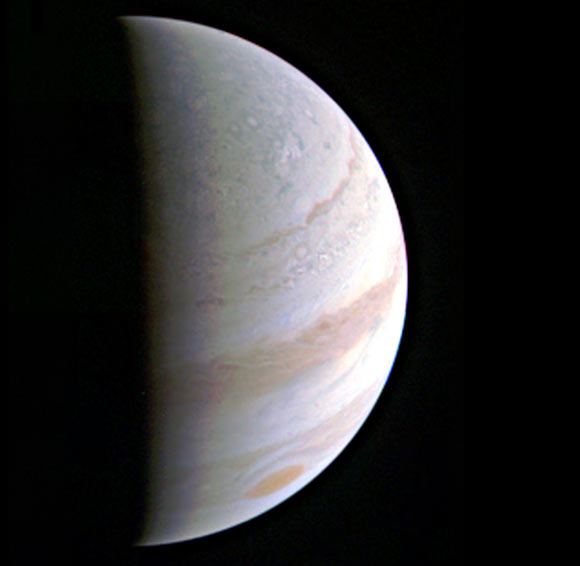On August 27, 2016, NASA’s Juno spacecraft successfully performed its first of 36 close flybys of the giant planet Jupiter.

Jupiter’s north polar region is coming into view as Juno approaches Jupiter. This image was taken on August 27, when the spacecraft was 437,000 miles (703,000 km) away. Image credit: NASA / JPL-Caltech / SwRI / MSSS.
The time of closest approach with the king of our Solar System was 9:44 a.m. EDT (6:44 a.m. PDT, 13:44 UTC) when Juno passed about 2,600 miles (4,200 km) above planet’s swirling clouds.
At the time, Juno was traveling at 130,000 mph (208,000 km per hour) with respect to the planet.
This flyby was the closest Juno will get to Jupiter during its prime mission.
“Early post-flyby telemetry indicates that everything worked as planned and Juno is firing on all cylinders,” said Juno project manager Dr. Rick Nybakken, from NASA’s Jet Propulsion Laboratory.
There are 35 more close flybys of the gas giant planned during Juno’s mission.
The August 27 flyby was the first time Juno had its entire suite of science instruments activated and looking at Jupiter as the spacecraft zoomed past.
“We are getting some intriguing early data returns as we speak. It will take days for all the science data collected during the flyby to be downlinked and even more to begin to comprehend what Juno and Jupiter are trying to tell us,” said Juno principal investigator Dr. Scott Bolton, from Southwest Research Institute.
While results from Juno’s instruments will be released down the road, a handful of images from JunoCam – the spacecraft’s visible-light camera/telescope – are expected to be released soon.
“We are in an orbit nobody has ever been in before, and these images give us a whole new perspective on this gas-giant world,” Dr. Bolton said.







